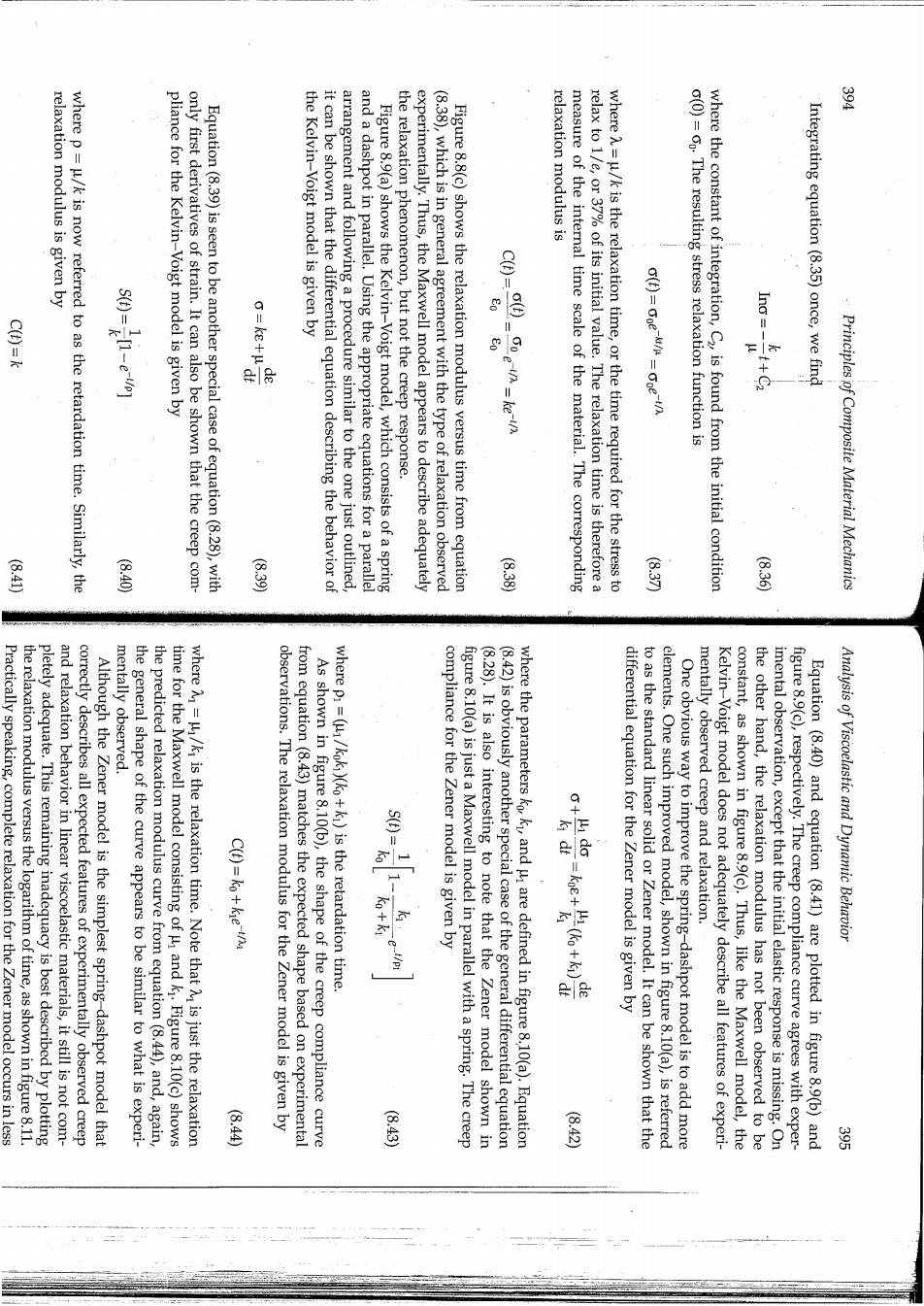正在加载图片...

relaxation modulus is given by where p =u/k is now referred to as the retardation time.Similarly,the pliance for the Kelvin-Voigt model is given by only first derivatives of strain.It can also be shown that the creep com- Equation(8.39)is seen to be another special case of equation(8.28),with the Kelvin-Voigt model is given by it can be shown that the differential equation describing the behavior of arrangement and following a procedure similar to the one just outlined, and a dashpot in parallel.Using the appropriate equations for a parallel Figure 8.9(a)shows the Kelvin-Voigt model,which consists of a spring the relaxation phenomenon,but not the creep response. experimentally.Thus,the Maxwell model appears to describe adequately (8.38),which is in general agreement with the type of relaxation observed Figure 8.8(c)shows the relaxation modulus versus time from equation relaxation modulus is C(t)= measure of the internal time scale of the material.The corresponding relax to 1/e,or 37%of its initial value.The relaxation time is therefore a where A=u/k is the relaxation time,or the time required for the stress to (t)=Goe-k/a =Goet/ o(0)=0o.The resulting stress relaxation function is where the constant of integration,C2,is found from the initial condition Integrating equation (8.35)once,we find Principles of Composite Material Mechanics 墨 640) 8.39 3.37 (8.36 Practically speaking,complete relaxation for the Zener model occurs in less the relaxation modulus versus the logarithm of time,as shown in figure 8.11 pletely adequate.This remaining inadequacy is best described by plotting and relaxation behavior in linear viscoelastic materials,it still is not com- correctly describes all expected features of experimentally observed creep mentally observed. Although the Zener model is the simplest spring-dashpot model that the general shape of the curve appears to be similar to what is experi- the predicted relaxation modulus curve from equation(8.44),and,again time for the Maxwell model consisting of and k.Figure 8.10(c)shows where =/k is the relaxation time.Note that is just the relaxation observations.The relaxation modulus for the Zener model is given by from equation(8.43)matches the expected shape based on experimental As shown in figure 8.10(b),the shape of the creep compliance curve where p=(/kok)(ko+k)is the retardation time. compliance for the Zener model is given by figure 8.10(a)is just a Maxwell model in parallel with a spring.The creep (8.28).It is also interesting to note that the Zener model shown in (8.42)is obviously another special case of the general differential equation where the parameters koki,and are defined in figure 8.10(a).Equation differential equation for the Zener model is given by to as the standard linear solid or Zener model.It can be shown that the elements.One such improved model,shown in figure 8.10(a),is referred One obvious way to improve the spring-dashpot model is to add more mentally observed creep and relaxation. Kelvin-Voigt model does not adequately describe all features of experi- constant,as shown in figure 8.9(c).Thus,like the Maxwell model,the the other hand,the relaxation modulus has not been observed to be imental observation,except that the initial elastic response is missing.On figure 8.9(c),respectively.The creep compliance curve agrees with exper- Equation (8.40)and equation (8.41)are plotted in figure 8.9(b)and Analysis of Viscoelastic and Dynamic Behavior 墨 .3) 3) 芳